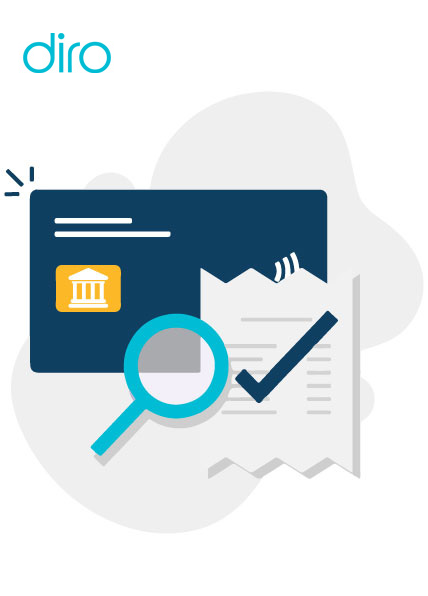How to Enhance Vendor Onboarding Process: Best Practices, Process, and Rules to Follow

Vendor onboarding is a tricky yet extremely meticulous process. Supplier relationship management is a systematic process that allows businesses and organizations to collect documentation and data to qualify, approve, and contact vendors, purchase goods or services, and make timely payments to supply partners. Vendor onboarding compliance is tough as numerous steps are involved.
A vendor is an entity that sells any specific product or service to your business, either for your business to sell it or as part of an item that you resell. The vendor onboarding process for e-commerce or other businesses is pretty much similar to employee onboarding, in which new members of a business learn about a company’s practices, processes, compliance, expectations, etc. There’s a lot to understand about vendor onboarding, doing it wrong can open the business to countless frauds.
Vendor Onboarding Best Practices
A proper and flawless vendor onboarding checklist can help your business avoid hefty mistakes. An improper vendor onboarding process can lead your organization to legal and compliance risks. There are some best practices that you can follow to bypass the vendor onboarding challenges.
- Know Your Rules
Before onboarding a vendor, your business should list and understand all the local, and global legal and compliance issues that apply to your industry and business. This assists in better vendor onboarding compliances.
- Educate Yourself
Read and understand all the technical challenges of supplier onboarding related to your business type. Education can lead to a better understanding of how to secure your business against vendor fraud.
- Prequalifying Is Important
Reduce your chances of risk and fraud by pre-qualifying vendors. Prepare a list of vendors based on their track record, willingness, and ability to meet up your organizational needs. This way you won’t be blindsided while onboarding a vendor. Verification can be done using vendor onboarding documents and ID verification solutions.
- Build Thorough Contracts
Each vendor and supplier needs to have different types of contracts. To successfully onboard a vendor, you may want to build additional governance for strategically important suppliers. The best vendor onboarding solutions can help you verify your vendors and assist in building contracts.
- Secure Information
It is always a good choice to secure your financial information from vendors, suppliers, and other third-party suppliers. You should use the latest technology and other solutions to verify if the vendors are legit and won’t cause any future problems.
- Think Strategically
Design your vendor onboarding process with global compliance rules in mind and a proper idea of business that aligns with your business needs. Your strategies need to benefit your business and support your financial goals.
- Track Data and Do Expense Analysis
Tracking data is always an important part of any onboarding process, be it employee onboarding or vendor onboarding. With constant data analysis, you can learn where to make improvements in your process.
- Implement Internal Training
You need to make sure that every member of your team understands the steps of the onboarding process and the software that is used to verify vendor identities and documents.
- Keep Team Members and Vendors Informed
Provide timelines and make sure your vendors follow through with them. Your team should be able to manage and deliver a plan. Your vendors should be aware of what you’re expecting of them, share this information with your vendors, and manage your expectations.
7 Mistakes to Avoid During Vendor Onboarding
Mistakes that are made during vendor onboarding are typically failures related to accountability, planning, compliance, and training. Now that you know what is vendor onboarding process is, the next step is to save organizations from risks. The best way to avoid mistakes is by following the best practices mentioned above and making sure to not make common mistakes. Avoiding vendor onboarding mistakes can offer great benefits to your company.
Here are all the mistakes you need to avoid during the Vendor onboarding process for e-commerce and other industries.
- Unable to Get Buy-in from Top Management: Any business vendor relationship success depends on the top to lower-level management support throughout the organization. Without that, a business supplier relationship is bound to fail.
- Failure to Choose Ideal Team Members: Accountability on your business’s end is the key to success. If your business is accountable for the work, the vendor partners will follow through.
- Failure to Plan: A slow and tedious attitude will inevitably lead to performance issues between a business and vendors. You need to build your plans for the future for smooth operations.
- Failure to Train: Without the right training and knowledge, your employees and vendors won’t be able to work ideally side by side together. Businesses need to provide proper training internally and externally.
- Failure of Proper Compliance: Failure to find proper potential vendors and lack of proper following of compliance can lead to friction full business relationship.
- Failure To Communicate: Improper communication is never a good thing in a business relationship. Keeping the vendors and everyone in your business in the loop is something businesses need to follow through.
- Failure to Build Flexibility: A business should have the ability to go with the flow, continuous improvement requires a willingness to refine the business operations based on changing trends. To improve the vendor onboarding process, businesses need to be flexible.
Benefits of Proper Vendor Onboarding Compliance
Shifting your procurement and vendor relationships from old processes to a more strategic function offers benefits beyond competitiveness, it also helps improve efficiency, mitigating risks, better relationships, and a better brand reputation. Here are all the benefits that come along with a proper business onboarding process:
- Greater Competitiveness: Most firms in manufacturing tend to spend more than 40% of their every dollar of sale on materials and goods. To achieve business goals, vendor management and close attention to buying performance can be critical factors in a firm’s competitiveness.
- Improved Efficiency and Profitability: The right vendor can make or break your business. Whenever you streamline the current buying processes and make use of data collected by vendor performance. Right decisions can help you avoid income and productivity losses. A streamlined process leads to less waste, a higher productivity level, and reduced startup times.
- Reduced Risk: Whenever you comply with industry and government regulations, you need to keep an eye out for your internal policies, verify your business vendor’s AML policies and educate them on certain factors. You can even reduce the risks by employing strategic tools like the DIRO’s online document verification tool vendor and business verification.
- Stronger Relationships: Vendor onboarding best practices lead to mutually beneficial partnerships which include training, proper flow of communication, and approval.
- Boosts Brand Reputation: If your business has a poor-performing vendor relationship, it can impact your brand negatively and cause brand reputation damage. As a business, you need to take charge of your vendor’s performance to improve your reputation with the customers.
Automating the Vendor Onboarding Process for E-Commerce
Automation is always good, there are three main components that a business should consider for vendor onboarding:
- Easy integration with internal platforms and systems already available
- A self-service portal for vendors
- Security to guard against cyber-attacks and prevent the business from financial fraud.
Your cost for vendor onboarding depends on the size of your business operation and the number of vendors you are currently working with. If you already have good working relations with a variety of vendors then you will need a system that can handle your growing needs.
How DIRO Can Mitigate Vendor Onboarding Fraud?
During the pandemic, the number of onboarding frauds has grown exponentially. According to a report by Bnn Bloomberg, NASA incurred a loss of $700 million due to the supply of faulty aluminum products. To avoid this income and productivity loss, businesses need to use solutions that can help verify vendors during the onboarding process. Vendor onboarding documents and ID verification are crucial for mitigating fraud.
DIRO’s online verification solution can reduce fraud, improve business relations and improve productivity. DIRO’s solution can verify vendor documents in an instant and assist in complying with AML regulations. The output of the solution is a court-admissible document with forensic data and a digital hash that makes the documents immutable. Being able to differentiate between legit and fake vendors during the first part of the onboarding process is something that every business needs.













